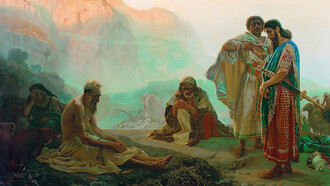Lebanon’s rich cultural and historical scene speaks for itself across the globe. However, when nature, history and culture meet in one place, the marvels cannot go unnoticed no matter how well known they may be. This is the case of the new cultural project launched in Qannoubine valley, where nature has long hosted an intense history and inspired diverse civilizations. This project will bring long hidden riches to light and add another dimension to Qannoubine Valley, Bcharri and Lebanon.
This initiative is the first and biggest cultural project in the history of the Levantine Church taking place in the renowned Qannoubine Valley. It was officially launched by former president Michel Suleiman and former Patriarch Cardinal Mar Bechara Boutros Al-Raii, in Diman (Bcharri district), on August 2012. Journalist Georges Arab, and member of the Qannoubine Association, says: “This sacred valley represents a significant cultural and spiritual treasure that must be exhibited and brought to light. There are many programs in this project supported and funded by different people including Nawfal Chedrawi funding the documentary films, Antoine Azour funding the library of the Holy Valley, Joseph Ghousoub funding the exhibition, and many other contributors.”
Within the frame of this promising program in Qannoubine Valley, several events and inaugurations have already taken place. In September 2017, artist Elias Khalifeh had lifted the veil on the statue of Patriarch Gabriel of Hjula commemorating his martyrdom in Tripoli in 1365 at the hands of the Mamluks. On the same day, artist Nasri Tawk also lifted the veil on the statue of Patriarch Moussa Akari of Barida who lived during the Ottoman rule and served from 1524 till 1567. A third statue of this series is for Patriarch Daniel of Hadshit who served from 1278 till 1282. Such historical displays also aim to shed light on the importance of coexistence between Christians and Muslims who built the Levantine culture and history hand in hand.
Such events and cultural activities have been carried out by Qannoubine Association since 2004 to inaugurate the recent achievements in line with this inclusive program detailed below. Official and religious figures as well as locals from all over the country and tourists attend these events every year throughout the summer. More contributors join this mission with every event and more are welcome to be part of this project that represents a milestone in the cultural and historical scene of the region. While the peace and serenity of the Qannoubine Valley fulfill the heart of every visitor seeking spirituality and depths, its historical and cultural weight enrich the minds of those seeking wisdom and knowledge.
The programs of this elaborate project include:
• Translation and publication of the Maronite Patriarchs’ biographies (translation to French, English, Spanish, Portuguese and Italian)
• The Holy Valley documentary films (in the above-mentioned languages about the unique history of the valley and its integration in contemporary life)
• Building of the Patriarchs’ Garden Theater
• Establishment of pedestrian and hiking routes around the valley leading to its different sites
• Establishment of a permanent sculpture exhibition symposium of the Patriarchs’ statues in Bronze
• The Holy Valley Painting Exhibition
• The Library of the Holy Valley (the library will contain a documentation of all writings related to the valley and facilities for the researchers of this and other projects)
• The Museum of the Holy Valley
• The Holy Valley book series (including around 30 books related to different themes such as the people, history, geology, councils, emigration movement, literature and religious influence, Ottoman and Mamluk periods, environment, artistic dimensions, demography, patriarchs, etc.)
• Embraced sites of the Holy Valley (an illustrated study of all the hermitages that have witnessed a spiritual life in the past and have since been abandoned)
• History of the Church through ten artistical stations
• Spiritual meetings (for the working team of clergy, researchers and technicians)
For more info on this project and how to contribute, contact George Arab.















